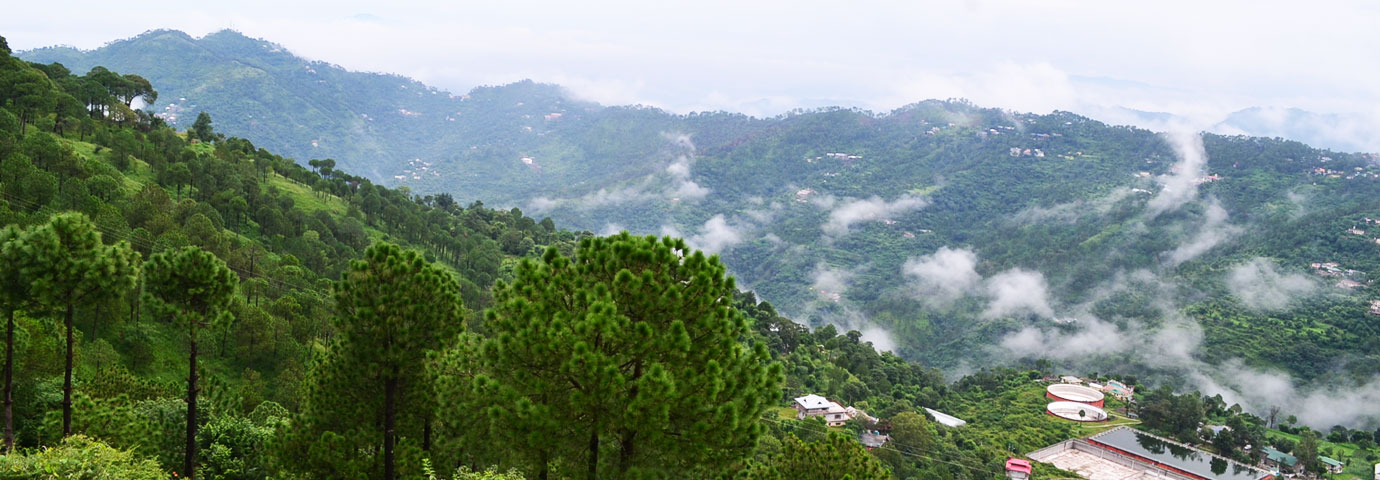Amongst the variousIndian Hill stations is Kaasauli. During the 17th century, driven by unsettled political conditions, some Rajput families from Rewari (in present day Haryana) fled their homes. They took refuge in the lower Himalayas, finally settling down at a village called Kasul where there was a perennial spring of fresh water. Today, some three centuries later, the spring is the site of a water reservoir and Kasul has grown into the delightful little hill station of Kasauli. But some locals would believe that Kasauli comes from Kausalya, a mountain stream that flows between Kasauli and Jabli. The name might even have been derived from Kusmawali or Kusmali, meaning flower maiden. Given the abundance with which the hills of Kasauli bloom from spring to autumn, this could well be the truth.
History
The calm and peaceful air of Kasauli belies any sense of history. Yet this region was in the thick of the westward Gurkha expansion, stemmed with some difficulty by the joint efforts of the British and some local chieftains, in 1814. The Gurkha ceded the fort at Sabathu and this was turned into a convalescent home for British nationals. Some time later the Governor-General, Lord Amherst, decided to develop Shimla Hills as a summer gateway for the British establishment and Col. Tapp, political agent at Sabathu, came to survey the Kasauli area.
The 1857 Indian War of Independence stirred the hearts of the Kasauli Guard, numbering about eighty Indian soldiers. Receiving news that the Gurkha Regiment at nearby Jutogh has also risen in revolt, the garrison at Kasauli set out to join them. Before the two could combine and pose a serious threat, the British agent talked the Gurkha Regiment into submission, on promise of a general pardon. The Kasauli Guard found themselves completely isolated. So far from being pardoned, they were severely punished for their insurgence.
Tourists Attractions
The highest point at Kasauli, known as Monkey Point, is now with the IAF and the site of new family apartment blocks for IAF personnel. Monkey Point commands a panoramic view of the hills, valleys and plains below, with the meandering Sutlej and, far away, the city of Chandigarh.
Lawrence School at Sanawar, six kilometers away, rich in tradition and a world in itself, also attracts tourists. The temple of Nahari Devi, which overlooks a waterfall, is also worth a visit. Nothing has so far affected the fall, not the severest drought or driest summer.
Around town, one can look for the graves of the two Chinese POWs who died here. Or try to find out the names of the two brothers who perished fighting the forest fire that ravaged Kasauli at the turn of the century. Or find the old time mailbox with a cast iron crown on top, a relic of the British Postal Service.
The two main walks around Kasauli, the Upper and Lower Mall are beautiful. The residents of Kasauli walk a lot, for Kasauli was always short on city attractions and meant for getting about on your own two feet, in communion with nature or if you are lucky, a walking partner. The somewhat steep Upper Mall takes you past an important landmark, the Kasauli Club. Founded in 1880 as the 'Kasauli Reading and Assembly Rooms', it was later converted into Kasauli Club. Initially the club provided accommodation to men only, women not being permitted unless it was very cold or if accommodation was going a-begging. Famous for its six tennis courts, its lavish 'tennis teas' and gala Saturday Nights, the club suddenly found itself posed for dissolution in 1947. But saved by the breadth of a hair, it survived to celebrate its centenary in 1980.
Delhi is connected to Chandigarh by air. From Chandigarh it is a little more than an hour by road to Kasauli. Buses connect Kasauli to many major cities of north India. Private taxis are also available between; to Kalka and proceed by bus to Kasauli, less than an hour away.
Best time to visit
The tiny hill town of Kasauli in Himachal Pradesh has been blessed with lush surroundings. The pleasant weather makes it a destination that can be visited all- year around. The summer season stays here from March to June when the temperature ranges between 28°Celsius and 14°C. The morning and the nights are cool. One can enjoy adventure activities and sightseeing at this time. Rains drench the place completely during the monsoon season, making the place green and beautiful. If you love rains, be here between July and September. The winter season stays in Kasauli from October to February. The temperature ranges between 5°Celcius to 14°Celcius, and the place experiences occasional snowfall too. Indulge in the activities of your interest during these months.


